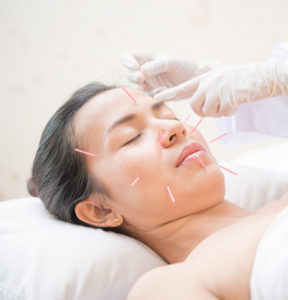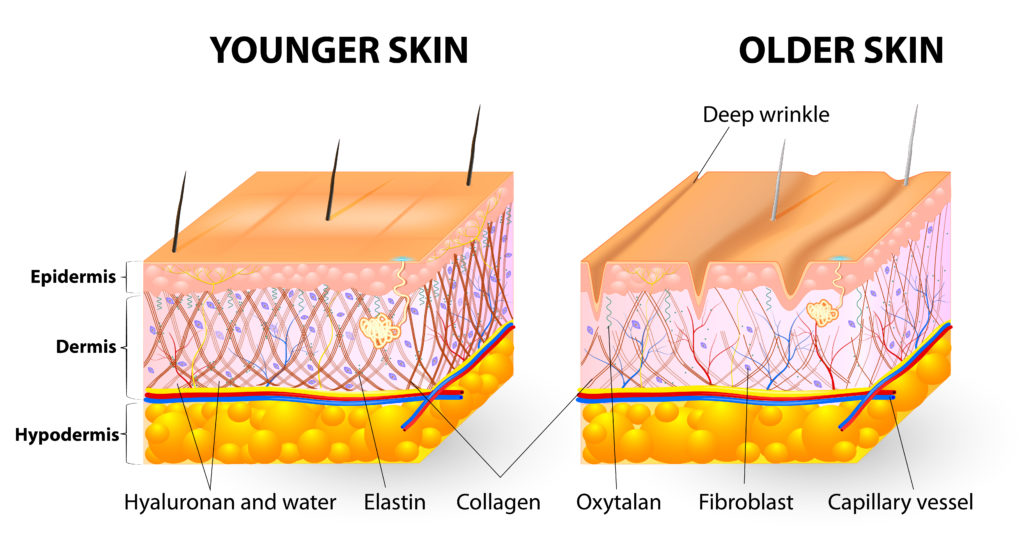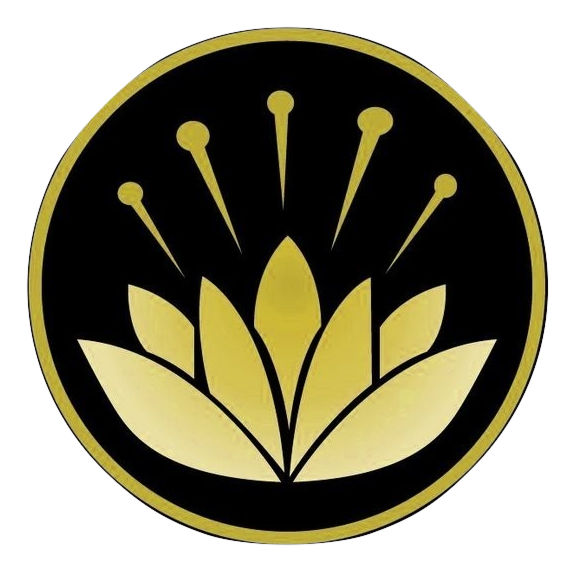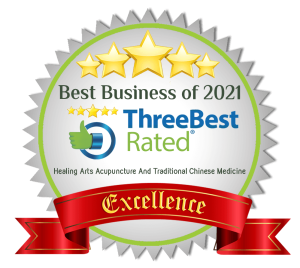
Cosmetic acupuncture is a form of therapy for the facial skin that has its roots within the tradition of Chinese medicine and has been practiced for at least a thousand years as a method of enhancing the youthfulness of appearance.
Once the reserve of emperors and empresses, today it has garnered a diverse group of devotes from professional actors and actresses to non-professionals simply seeking its benefits due to increased levels of public awareness and accessibility.
Similar to therapeutic acupuncture, the modern technique of the procedure involves the virtually painless insertion of tiny, sterile needles into specific areas of the skin in which regenerative effects are desired.
Though results will vary according to an individual’s general health, age, and lifestyle, among other factors, noticeable changes in appearance normally begin to manifest within the course of approximately 5-6 individualized treatments.
Potential Effects
-
- Noticeable reduction of fine lines and diminishment of deep wrinkles
- Firmed jowls
- Elimination of puffiness and dark circles under the eyes
- Restoration of a natural and stress-free complexion
- Improvement of conditions such as acne, eczema, melisma, rosacea, and dry skin
- Relaxation of muscle tone
- Enhancement of the skin’s natural rosy tone through improved circulation
- Balancing of complexion
The issue
Aging affects the skin in various ways. Structural changes involving the depletion and degeneration of its constituents leads to changes in its appearance that are characterized by wrinkles, dullness, dryness, and sagging. The factors responsible for these changes are complex and comprise a mixture of both internal (genetics, cellular metabolism, hormone and metabolic processes) and external (damage from sunlight, pollution, and ozone) elements.

Aging skin is specifically characterized by a reduction in such constituents as collagen, elastin, fibroblasts (from which collagen, elastin and other supportive protein precursors originate) and hyaluronic acid, a glycosaminoglycan that functions as a water binder and extracellular lubricator.1,2
In addition, degenerative effects lead to structural disorganization among some of the proteins that are produced within the dermis as well as to a reduction in the tissue’s vascular foundation and rate of cellular turnover.2
While it is not possible to halt these natural processes, it is possible to reduce the speed of their progression and, in some cases, temporarily counter their effects. Chinese medicine, and cosmetic acupuncture in particular, attempt to naturally achieve these goals through the stimulation of the innate regenerative and healing abilities of the body and its skin.
The Science
As is the case with conventional acupuncture, there are many hypotheses regarding the actual biophysical mechanisms involved in cosmetic acupuncture. While research into the exact processes is not as developed as it is in the case of standard acupuncture, insights gleaned from the existing database of conventional acupuncture studies, as well as from other relevant bio physiological investigations, allow for the proposal of several mechanisms.
One of these relates to the body’s production of the chemical compound adenosine. It is known from animal studies that dermal needling can lead to a localized release of adenosine,3 a compound which is known to stimulate the production of skin firming collagen 4 through its activating effects on fibroblasts.5 Properly placed, such needling can also stimulate the genesis of other matrix proteins through its mechanotransductive effects upon cells within tissue.6 Acupuncture also appears to have the ability to increase the number of dermal fibroblasts, as well as other cell types.7 Taken collectively, these abilities are likely to be involved in at least some of the beneficial effects.
In a study of the effects of dermal acupuncture on burn injured mice,7 acupuncture was shown to reduce the levels of certain inflammatory markers, increase the expression of fibronectin, a matrix protein involved in tissue repair, and increase the proliferation of new cells, including those producing basic fibroblast growth factor, a substance known to stimulate the production of new blood vessels and epithelial tissue.15 Results of another, similar, study involving puncture wounds rather than burns, revealed comparable effects as well as an increase in the proliferation of collagen type I fibroblasts, a type of cell involved in the production of new collagen.8
In another line of research, a study involving the use of electro-acupuncture demonstrated that acupuncture can produce an increase in the levels of NO (nitric oxide) within vascular beds thereby facilitating improvement in the microcirculation of the skin.9 There is evidence to suggest that this effect may also be possible to achieve through the use of conventional needling techniques given the results of another study in which the use of standard cosmetic acupuncture was shown to increase the water and oil content of facial skin.10
Below the dermal layers, at the level of the muscular substratum, cosmetic acupuncture has shown results as a therapy for the improvement of facial elasticity through its demonstrated restorative effects on resting muscle tone.11
In research conducted to evaluate the regenerative effects on skin of a medical procedure that involves needling, levels of collagen and elastin production were histologically demonstrated to have been positively affected. Percutaneous Collagen Induction Therapy (PCI) is a medical treatment in which a roller which has been embedded with thin needles is repeatedly rolled over an anesthetized patient’s skin leading to the creation of a very high density of perforations.
According to an evaluative study of this procedure16 :
“Histologic examination was carried out… and showed a considerable increase in collagen and elastin deposition at 6 months postoperatively. The epidermis demonstrated 40 percent thickening of stratum spinosum…”
“Percutaneous collagen induction… has proved to be a simple and fast method for safely treating wrinkles and scars.”
It must be emphasized that, in contrast to the targeted approach of cosmetic acupuncture, PCI therapy is not targeted upon individual wrinkles but involves the creation of thousands of individual perforations over a region of skin. As such, the results quoted above in relation to PCI cannot be extrapolated to describe those that may be expected through cosmetic acupuncture treatments. Nevertheless, such results do tend towards lending support for the conceptual validity of, and proposed mechanisms behind, cosmetic acupuncture and are quoted above in this context.
– Illustrated Guide to PCI17
In any review of the physiological mechanisms involved in producing the effects of facial cosmetic acupuncture, the role of general body acupuncture, which almost always accompanies the cosmetic portion of treatment, must also be taken into consideration. This is because results intimately depend upon the function of a complex physiological network that involves the whole body and with its known effects on the endocrine, vascular, nervous, immune and digestive systems,12 body acupuncture can be assumed to play a powerful supportive role in the achievement of therapeutic results.
The effectiveness
According to an evaluative study undertaken in China:
Among 300 cases treated with cosmetic facial acupuncture, 90% had marked effects with one course of treatment. Effects included: improvement in skin texture and colouring, increased elasticity, reduction of wrinkles and overall rejuvenation.13, 14
Hollywood Green correspondent Maria Menounos’ exposé on cosmetic acupuncture. (3 min)
The Process
Within the practice of Chinese medicine, the appearance of a patient’s skin provides important diagnostic information regarding the state of his or her general health as these elements are considered interrelated. A course of cosmetic acupuncture treatment, therefore, begins with the close examination of a patient’s complexion and is followed by a thorough review of his or her medical history as well as diet and lifestyle choices. To address any deficiencies that might be uncovered, a course of medicinal herbs may be prescribed and followed through with nutritional and/or lifestyle recommendations.
Based on the result of the initial assessment, exfoliation or other preparatory procedures of the face such as gua sha might be used in order to promote lymphatic drainage and the opening of pores. Treatment would then proceed to include the recommended course of facial, as well as general body, acupuncture, as may be required, and would end with the application of a professional grade nourishing skin care product and gentle massage of the face and neck.
A complete treatment regimen at our clinic will usually encompass between ten to twelve, sixty to ninety minute sessions performed at a frequency of two to three times per week.
At Healing Arts, we also offer anti-aging LED light facial treatments to our clients. This safe and natural therapeutic modality, which produces physiological responses similar to those induced by acupuncture, can be used in tandem with our cosmetic acupuncture procedures in order to help naturally boost their effectiveness and hasten treatment response times.
Dermatologist Dr. Whitney Bowe outlines some of the therapeutic effects of red and IR LED light on the Rachael Ray Show.
For more information about light therapy at our clinic, please visit our LED Light Therapy page.
The Benefits of Cosmetic Acupuncture
-
- Natural treatments that stimulate the body’s own powers of regeneration
- Holistic approach that promotes improvement in general health and wellness
- Less costly than many other alternatives
- No serious side effects or risk of disfigurement
- No extended recovery period necessary
- May be combined with Botox treatment and may save the price of a few injections per year
Potential Side -Effects
While cosmetic acupuncture produces no undesirable side-effects in most people, those with particularly sensitive skin may experience a temporary flushed appearance of their complexion. This effect, a result of the enhanced circulation that is induced by the procedure, can be expected to resolve within a couple of hours.
We suggest that patients who react in such way schedule their treatments for the evening.
On rare occasions, a small amount of temporary bruising may occur around a needling point.
Click here for links to recent media articles regarding cosmetic acupuncture.
_________________________________________________________________
Sources:
1 Ruta Ganceviciene et al. “Skin anti-aging strategies.” Dermatoendocrinology. 2012. Web. 01/10/2017
2 Dayan, Nava. “Skin aging handbook: An integrated approach to biochemistry and product development.” William Andrew Inc. 2008. Web. 01/10/2017
3 Goldman, Nana et al. “Adenosine A1 receptors mediate localized anti-nociceptive effects of acupuncture.” 2010. Nature Neuroscience. Web. 01/10/2017
4 Chan, SL Edwin et al. “Adenosine A2A receptors promote collagen production by Fli1-and CTGF-mediated mechanism.” Arthtritis Res Ther. 2013. Web. 01/10/2017
5 Valls, Maria et al. “Adenosine receptor agonists for promotion of dermal wound healing.” Biochemical Pharmacol. 2009. Web. 01/10/2017
6 Fung, PC. “Probing the mystery of Chinese medicine meridian channels with special emphasis on the connective tissue interstitial fluid system, mechanotransduction, cells durotaxis and mast cell degranulation.” Chine Med. 2009. Web. 01/10/2017
7 Jin-Ah Lee. Et al. “Acupuncture accelerates wound healing in burn-injured mice.” Burns. Vol 37, Issue 1. 2011. Web. 01/10/2017.
8 Park, Sang In et al. “Therapeutic effects of acupuncture through enhancement of functional angiogenesis and granulogenesis in rat wound healing.” Evid Based Complmentary Alternat Med. 2012, Web. 01/10/2017
9 Jou, Nainn-Tsyr & Ma Sheng-Xing. “Responses of nitric oxide cGMP release in acupuncture point to electroacupuncture in human skin in vivo using dermal microdialysis.” 2008. Web. 01/10/217
10 Nozomi Donoyama et al. “Cosmetic acupuncture to enhance facial skin appearance: a preliminary study.” BMJ. 2012. Web. 01/10/2017
11 Younghee Yun et al. “Effect of facial cosmetic acupuncture on facial elasticity: an open-label, single arm pilot study.” Evid Based Complementary Alternat Med. 2013. Web. 01/10/2017
12 “Acupuncture.” Johns Hopkins Medicine, 01/10/2017, http://www.hopkinsmedicine.org/healthlibrary/conditions/complementary_and_alternative_medicine/acupuncture_85,P00171
13 Zhang, Q. and Zhu, L. Meridional Cosmetology: Report of 300 Cases with Discussion of Underlying Mechanism. The International Journal of Clinical Acupuncture. 1996 pp 401-405
14 Doran, Vivian. “An introduction to facial revitalisation acupuncture.” European Journal of Oriental Medicine. 2007. Web. 01/10/2017
15 Bhora, FY. et al. “Effect of growth factors on cell proliferation and epithelialization in human skin.” Journal of Surgical Research. 1995. Web 01/10/2017.
16 Aust, MC et al. “Percutaneous Collagen Induction Therapy: an alternative treatment for scars, wrinkles, and skin laxity.” Plastic Reconstructive Surgery. 2008. Web. 01/12/2018.
17 “Illustrated Guide to PCI” downloaded 01/12/2018 from:
https://www.kvm-medizinverlag.de/out/media/Illustrated_Guide_Percutaneous_Collagen_Induction.pdf






